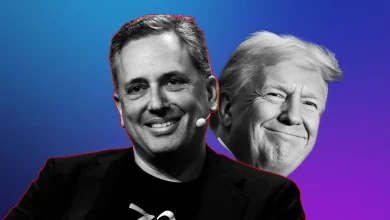
In a significant move earlier this month, the US Federal Reserve announced a reduction in the federal fund interest rate by 25 basis points. This decision adjusted borrowing costs to a new range of 4.25% to 4.5%. As Fed Chair Jerome Powell unveiled the third rate cut of the year, he emphasized a cautious stance towards any future rate adjustments. Such prudence underscores the complexity of the current economic landscape and the challenges faced by policymakers in navigating these waters. Experts now suggest a noteworthy 40% probability that the Federal Reserve might consider an interest rate increase in 2025. This potential shift in monetary policy has sparked widespread interest and speculation. Here’s a comprehensive look at what this could mean for the economy and stakeholders.
Federal Reserve Faces 40% Rate Hike Odds in 2025
Among the voices anticipating a possible rate hike is Apollo Global Management, a prominent entity in the realm of alternative asset management and retirement solutions. The firm projects a 40% likelihood that the US Federal Reserve will deliberate on a rate hike in 2025. This prediction is rooted in various economic indicators and reflects the broader sentiment in financial markets. Such potential policy shifts are closely monitored by businesses and investors alike, as they could significantly impact borrowing costs, investment strategies, and overall economic activity.
Inflation Above 2% Challenges the Fed’s Plans
At the beginning of the year, the US inflation rate stood at 3.1%. It reached a yearly peak of 3.5% in March before experiencing a gradual decline over the following months. By September, it had fallen to a yearly low of 2.4%. However, the subsequent months saw a resurgence, with inflation climbing to 2.6% in October and further to 2.7% in November. This upward trajectory poses a significant challenge for the Federal Reserve, which aims to bring inflation down to its target of 2%. The persistent growth in inflation rates raises concerns about the Fed’s ability to consider further rate cuts. Experts argue that unless this trend reverses, the Fed may be compelled to reassess its monetary policy strategies to maintain economic stability.
Economic Strength Supports Rate Hike Predictions
The robustness of the US economy is a pivotal factor fueling predictions of a potential rate hike. Strong economic activity can lead to sustained inflationary pressures, complicating the Federal Reserve’s monetary policy decisions. As the economy demonstrates resilience and growth, the likelihood of interest rate increases becomes more pronounced. This scenario underscores the delicate balancing act faced by policymakers, who must weigh the benefits of economic expansion against the risks of rising inflation.
In conclusion, as inflation consistently remains above the Federal Reserve’s target, the possibility of rate hikes in 2025 becomes a focal point of discussion among economists and market analysts. The interplay between economic strength and inflationary pressures will significantly influence the Fed’s policy directions. Will the momentum of economic growth prevail over inflation concerns? As the situation unfolds, only time will reveal the path forward for monetary policy in the United States.






